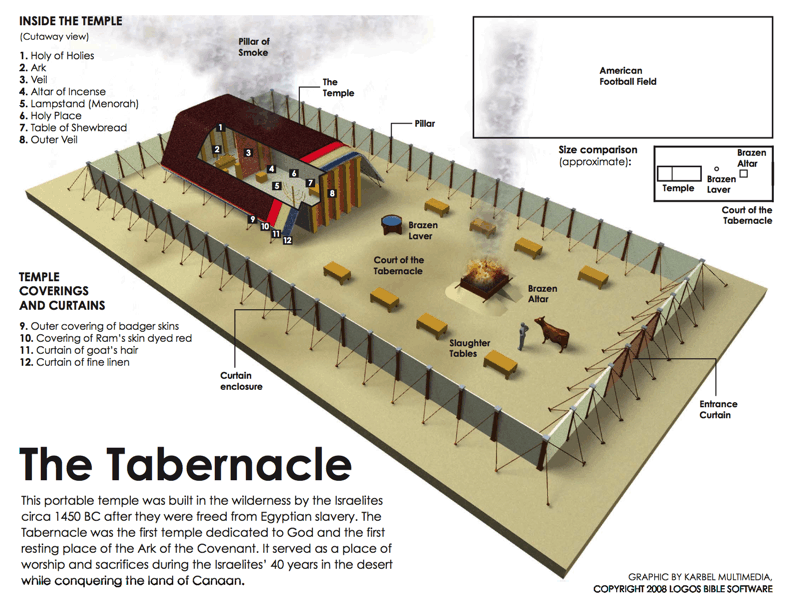Bible Study Made Simple
Title – One Sacrifice, One Faith
Teaching – One sacrifice, accepted by faith, is all need to be reconciled with God.
One Sacrifice is Enough
| Heb 10:1-3 | Yes, the animal sacrificial system brought guilt to the Jew since each year’s reminder brought guilt.On the other hand, since we possess sin-distorted minds, unnecessary guilt can plague the redeemed. Outside sources, other people, “memorials,” and demons can also cause this.The cure? Knowing that God never condemns (Romans 8:1). This gives us confidence that our condemnation is never from God, and can serve as a reminder. We need also to practice discernment, in that God does correct our sinful habits, and that we have liberty in our Christianity. Romans 4 &15 provide guidelines here. |
| Heb 10:4-11 | Mark 12:33, Mat 9:13, Psalm 51:16, Hos 6:6 and many other places in the Bible point out God is not into ritual, or the slaughter of animals. The soothing aroma spoken of often in Leviticus and other places is the aroma of a pure desire of the worshipper, and obedience. This manifestation of love, obedience, is put forth in verse 9 by submitting to the Father’s will. By perfect obedience, Jesus was able to be the perfect sacrifice, because in that perfect obedience, He remained untainted by sin. An imperfect analogy is a multi stage space rocket; the first stage lifts the rocket into the air, it must be jettisoned do that the 2nd stage and payload can travel beyond the atmosphere (temptation) and the force of gravity (sin). The first stage is the Old Testament. v11 Once for all, the Cross saves for all we sin, not just those leading up to our salvation. The idea of sanctification is a three fold process. Here the first step, of being set apart for Christ is in mind. The other two steps are the day to day process by which the Holy Spirit makes us more like Christ. The final perfecting step is after the death of our mortal bodies. |
| Heb 10:11-18 | The then ongoing ministry of the priest required work, standing up and working. Jesus, sat down after having completing His work. Psalm 110:1 echoes this. The only time He stands up is to greet the saints as He did for Stephen in Acts 7:56.Verse 14 continues the sanctification theme in the previous paragraph. The Law of the covenant is replaced with the Law of love “If you love Me, keep my commandments – John 14:15 and others. Here the Law of Love is applied properly to the heart. As a result, God sees us through the eyes of love, as we are perfected by the Robe of Righteousness. v18 – Consequently since we are declared righteous, sacrifice for sin is unnecessary. |
Living by Faith
| Heb 10:19-25 | As has been said, we have no reason to cower because of our past, we can be confident. We draw to our Heavenly Father in confidence, with sincerity, as a young child curls into her daddy’s lap, sure of her place with him. Our confession is this once for sacrifice of Jesus, to the Jew, the reader warns not to return to the old ways. But this is also true for Gentiles after the book was written; we are onto to return to the works righteousness most of us believed prior to our salvation. It can show up in a variety of ways, getting “closer to God” by acts, saying Rosaries, teaching litlly kids in Sunday School, leading Bible studies, or as non-Christians, adding up all the good things and weighing them against the bad.The point is, it is not only 1st century Christian Jews who have a “going back to the old ways” mentality. |
| Heb 10:26-31 | There is only one way to God; the Gospel. There is no alternate choice. See also Numbers 15:30-31. The picture is one of shaking a fist defiantly at God; there is only judgment in this case. verse 31 is probably grossly unstated or thought about or preached in the 21st century church, however the grim truth of it remains. Jonathan Edwards preached on this subject in colonial America in 17441. His sermon, based on Deu 32:35, “Their foot shall slide in due time,” was entitled “Sinners in the Hands of an Angry God.” Edwards delivered it after walking many miles in inclement weather. Being sick himself, his delivery was weak and monotonous. But the the Holy Spirit so moved the people who heard it that is was said that grown men shrieked and clutched the pillars and pea in the church out of fear of hellfire consuming them. |
| Heb 10:32-39 | The author now appeals to marshall their faith, and holding forth the promise of Christ at His return. As you can see, the Jews of this time paid a heavy price for believing in Jesus. No wonder the admonition to build up and encouraging each other! |
Memory Verse – “ Let us consider how to stimulate one another to love and good deeds, not forsaking our own assembling together, as is the habit of some, but encouraging one another.” Heb 10:24b-25a
Application – How will you live out what you have learned?
I will hold fast when, not if persecution comes.
